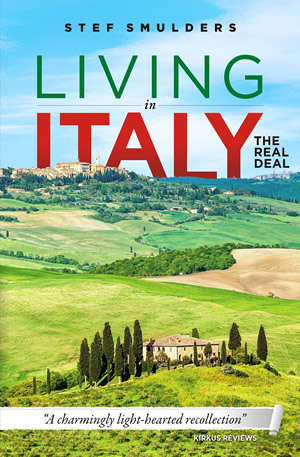
Art, Museums & libraries
Milan is not just a city of fashion, design and businessmen, but also a major center of art.
You can visit many churches that exhibit treasures from roman times till the 19th or even 20th century (the doors of the Duomo ). Just to mention a few highlights: Sant'Ambrogio , Sant'Eustorgio , San Maurizo. See for more the section on Churches & Abbeys in this guide.
People collect things and if the collection is worthwhile it may end up in a museum, of paintings, sculptures, furniture or whatever. Milan has a range of these to visit and the art museums like the pinacoteche Ambrosiana and Brera and the Novecento, Poldi-Pezzoli museums are among the most famous.
But there is more, like the Archeological museum, the Astronomy museum, the Natural History museum. The Castello Sforzesco even houses a range of different civic museums. And just as with the Castello, many museums are located in interesting historical buildings and villa's, worth the visit alone! Take e.g. the Historic Houses Museums and the Villa Necchi.
Below we present the museums in Milan. Click to open the description of each these.

Milan's oldest museum
The Ambrosian Art Gallery, located not far west from the Duomo, consists of the actual Art Gallery as well as the Biblioteca and an Accademia.
Paintings and sculptures from the 14th century to the beginning of the neoclassical 19th century are in the collection. An overview of the exhibition rooms is available on the very extensive museum website as well as a virtual visit to the exhibition rooms.
The most significant works of art include:
- La canestra by Caravaggio
- Ritratto di Musica by Leonardo da Vinci
- Madonna del Baldacchino by Botticelli
- the small pictures of Jan Brueghel
- sketch of the Scuola di Atene of Raphael
- Adorazione dei Magi by Titian
The Library has the Codex Atlanticus (the most important collection of his drawings) of Leonardo da Vinci on exhibit and also a manuscript of Virigilus that once belonged to Petrarca.
Reservation in advance is advised as only a limited number of people is let in at a time. You can reserve tickets on-line or at the call-center 0515881589.
You obtain a 13% discount with the MilanoCard.
Accessible to the disabled.
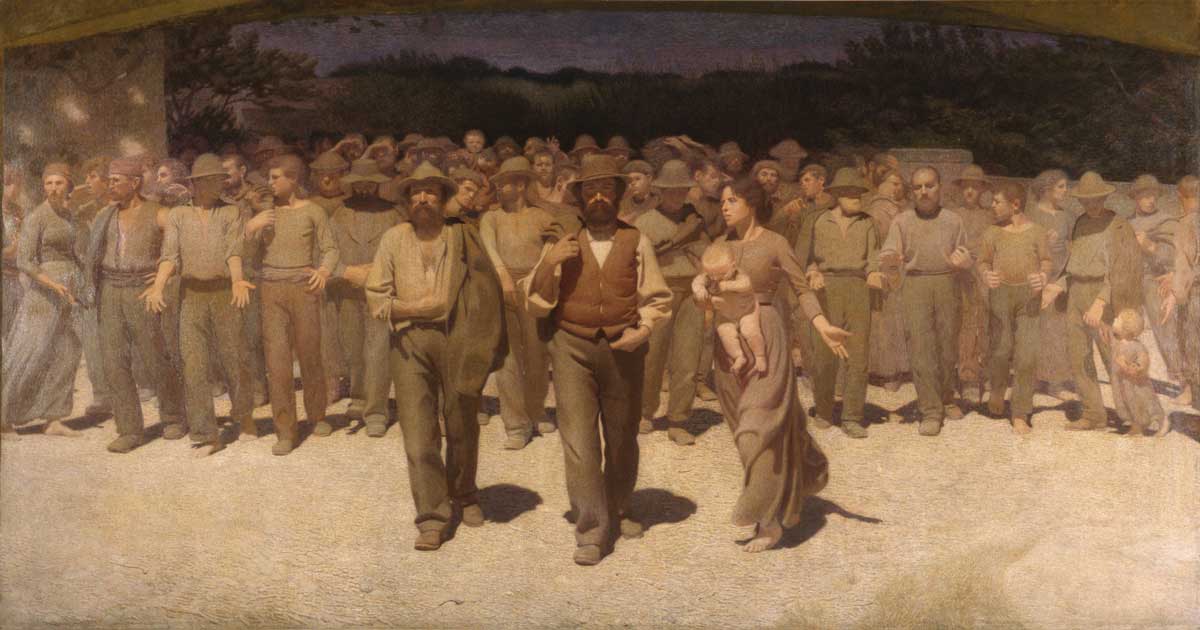
Italy's Modern Art Museum
Next to the Palazzo Reale facing the square of the Duomo, is the newly opened (2010) Novecento Museum of Milan. It is housed in the beautiful twin Arengario buildings that have been restructured to provide proper space for the collection of Italian modern art.
Several private collections have found a place here (in particular the Juncker collection) as well as the famous Quarto Stato of Pellizza di Volpeda (from April 2011).
You'll find examples of all 20th century movements here:
- Futurism,
- Novecento Movement,
- Spatialism,
- Concrete Art Movement
- Arte Povera Movement,
as well as work of prominent artistic figures, including the famous work of Boccioni: Unique Forms of Continuity in Space, (one of the ten or so casts that exist). See the back side of your Italian 20 eurocent coin if you don't know it.
Other works are of De Chirico, Morandi, Kounellis and many others.
An audio-installation of Marzia Migliora introduces the visitor to 24 masterpieces of the collection. The new museum also houses a research library, cinema and a restaurant.
Note: you may visit for free each day from 2 hours before closure and on Fridays from 3:30!
A bite of Italian: in Italian: the centuries are usually designated by the number of the hundreds, i.e. il novecento = "the nine-hundreds" instead of 20th century.
Transport
Metro 1 and 3, Duomo stop
An escalator directly connects the museum to the Milan metro below.
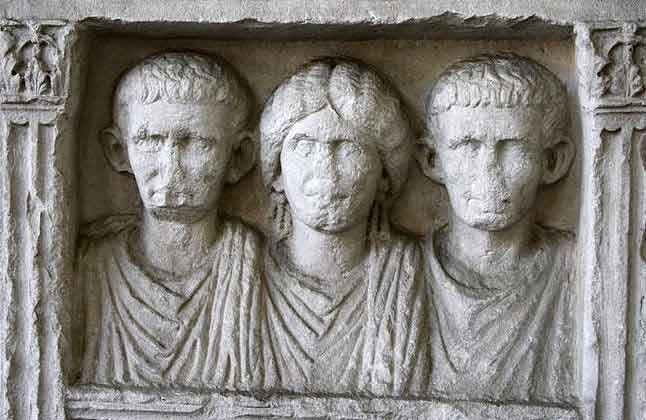
Ancient times revive
In the complex of the former Monastero Maggiore, the monastery adjacent to the San Maurizio church along the Corso Magenta, the Archaeological Museum of Milan is located.
Of important relevance is the Roman section, witness of the period in which Milan (Mediolanum) was the capital of the empire (4th century).
One of the more important finds is that of the Roman Theater of Mediolanum, remains of which can be seen underneath Palazzo Mezzanotte and Palazzo Turati.
Other highlights:
- the Patera di Parabiago, a precious 4th century ritual silver plate,
- the Trivulzio diatetra cup, an ancient roman jar
- the treasure of Cesarea Marittima
- the Cista Etrusca
- Parthenopaeus calyx crater
- the Germanic buckle
- Orestes crater
- the Zeus’s Head
- the Panther mosaic
Outside the Museum there are three important ruins of the Roman period: the Roman wall, the polygonal and the Circus tower.
The museum is accessible to the disabled, but it is better to make a phone call first (02 804843), also to get permission to park your car in the courtyard.
Transport
Metro 1, 2 Cairoli or Cadorna
Tram 16, 19
Bus 50, 58, 94
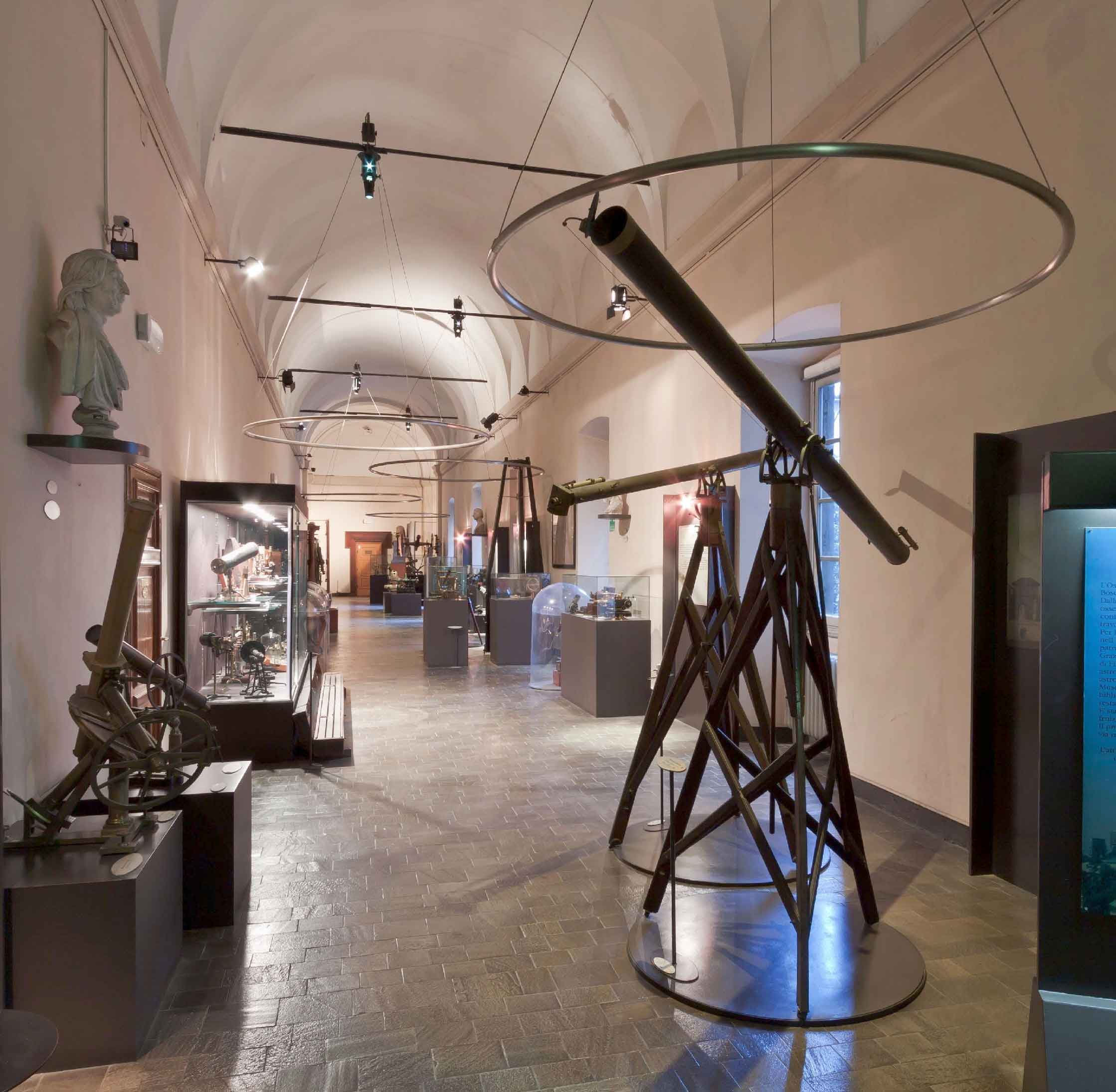
Mars' canals were discovered here
The Astronomical Observatory of Brera, housed in the ancient Palazzo Brera, is the scientific institute of Milan. It was founded by a Jesuit priest in 1764 and from this observatory the famous Italian astronomer Schiaparelli discovered the "canals" of Mars.
The museum hosts:
- an ancient library (30,000 titles, with prints of Copernicus and Galileo),
- a historical archive and
- a collection of astronomical instruments (clocks, chronographs, telescopes, globes, maps etc).
In the dome, on the upper floor of the Palazzo, there is the refractor telescope from which Schiaparelli studied Mars.
The Permanent Exhibition is open to the public from Monday to Friday from 9:00 to 16:30. The entrance is free.
Schiaparelli's dome and telescope can be visited only through guided tours (a small fee is required) every Monday-WednesdayFriday (excluding holidays) at 14:00 (no reservation required; max 7 persons on a first come first served basis).
Via Brera, 28

Since October 2, 2008, the Bagatti Valsecchi Museum, the Boschi di Stefano Historic House Museum, the Necchi Campiglio Villa and the Poldi Pezzoli Museum have been together in the network of Milanese historic house museums. The network was born in order to make known and promote the history of nearly two centuries of Milan’s cultural and artistic patrimony, as seen through the eyes of its protagonists: the nobles Gian Giacomo Poldi Pezzoli and the brothers Fausto and Giuseppe Bagatti Valsecchi in the 19th century, as well as the Boschi Di Stefano couple and the industrialists Necchi Campiglio of the 20th century.
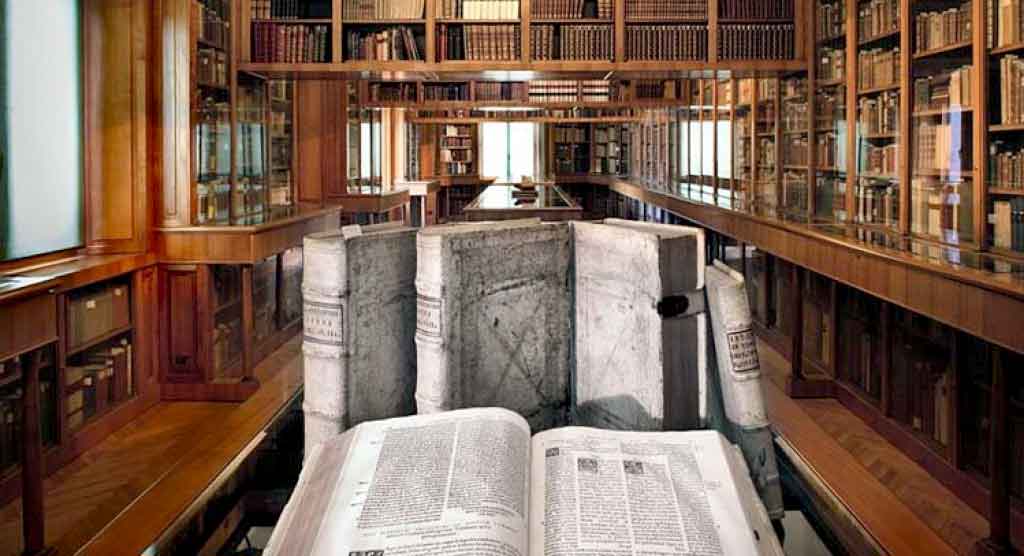
Ancient books and Theater
This is a small library, on the parallel north of Via della Spiga (Quadrilatero d'Oro), specialized in 20th century Italian literature, art, ancient books (on Utopia), the history of cinema and of science fiction. It also owns a collection of valuable books.
There are regular exhibitions, on Dante and the Islam e.g. and there is a small theater (Teatro di Verdura) with activities in summer.
The library has a website in Italian
Partially accessible to the disabled.
Via Senato 14
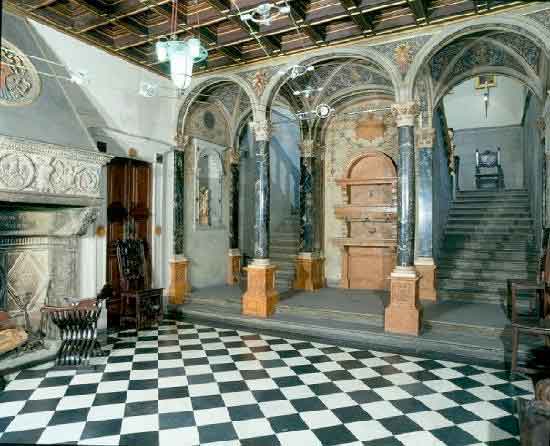
Collector's House Museum
This is one of the few museums in Milan that are located in the historical palazzo of the collector itself. In this particular case it is the house of the brothers Fausto and Giuseppe Bagatti Valsecchi. House and interior are in 19th century neo-renaissance style. The palazzo is located right in the middle of the fashion district, the Quadrilatero.
You may find the work of several Renaissance painters here, like Zenone, Giampietrino and Bellini. In the fifteen or so beautifully decorated rooms you'll also find arts and crafts and the 16th century bed of Fausto!
A virtual visit is available at the website.
The Museum is one of the four Historic House Museums (the others are the Villa Necchi , the Museo Poldi Pezzoli and the Casa Museo Boschi Di Stefano) for which a passe-partout is available at 20€ euro.
You receive a 25% discount to the Bagatti Valsecchi house with the MilanoCard.
Not accessible to the disabled.
A bite of Italian: a residential building of a certain size with more floors is called a palazzo, which is something different than a palace!
Via Gesù, 5
Transport:
Metro 3, Montenapoleone stop
Metro 1, San Babila stop
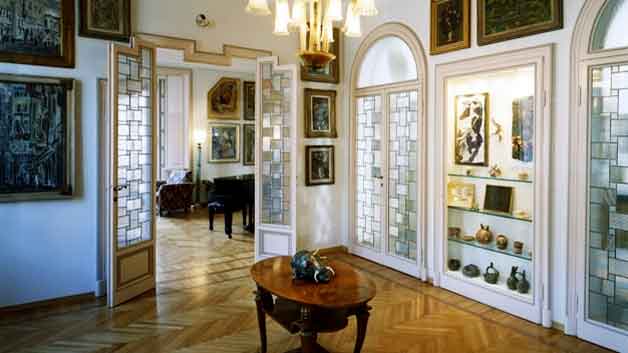
A collection of modern Italian paintings
The Boschi Di Stefano Museum is one of the four Historic House Museums. The others are the Villa Necchi, the Museo Poldi Pezzoli and the Casa Bagatti Valsecchi.
The former owners of this house donated their art collection to the city of Milan in 1973, under the condition that it be preserved and exhibited in the house itself.
The art collection of the Boschi Di Stefano family ranges from the futurism to the 1950s with works by Boccioni, Sironi (Venus of the Ports), Morandi (Paesaggio) and De Pisis (Duke Palace). In the central room works of De Chirico (Les brioches), Campigli (Women Greeting) and Savinio (Annunciation) are displayed.
Transport
Metro 1 Lima stop
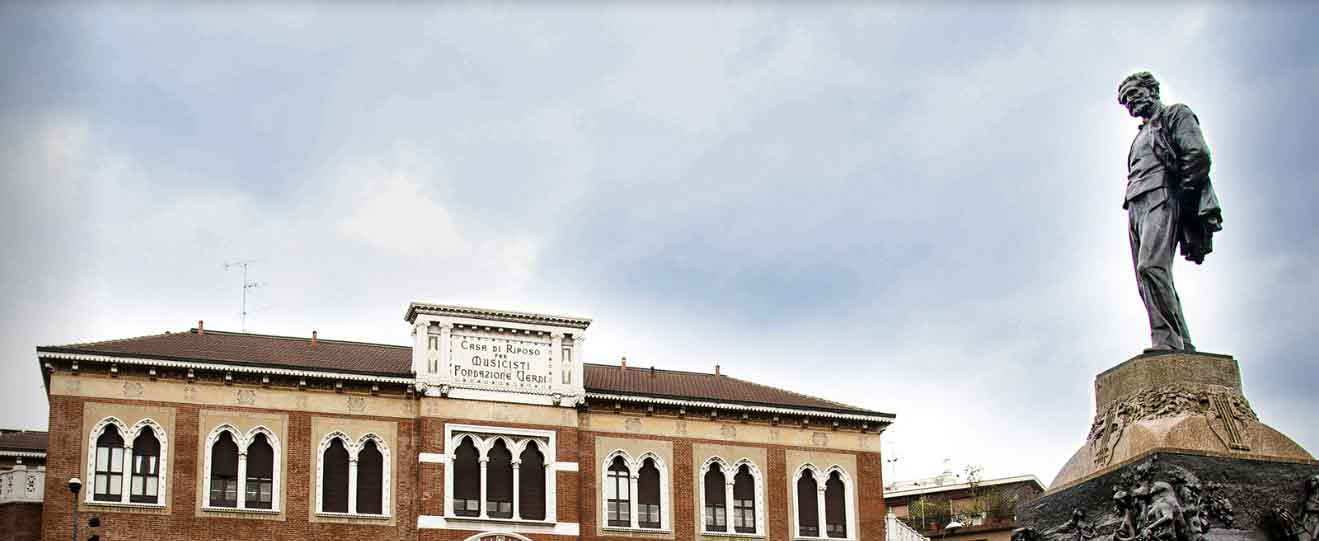
Where the master never lived
To see the Villa where Verdi really lived, you need to go to the village of Busseto (not that far from Milan) and not to what is is usually called Casa Verdi, but in fact is the Casa di Riposo per Musicisti, the home for retired musicians.
But the body of Verdi and his wife La Strepponi, are indeed here, buried in the solemn crypt of the retirement home Verdi initiated in 1899: "Among my works, the one I like best is the Home that I have had built in Milan for accommodating old singers not favored by fortune ..." he writes in a letter.
Verdi's crypt can be visited from 8:30-6:00. The museum rooms and the Great Room of Honor may be visited only by group reservation.
On the square facing the building, there is a monument to honor the composer.
Transport
Metro 1 Buonarroti or Wagner stop
Tram 24 Via Ravizza stop
Bus 18 Corso Vercelli or Via Marghera stop
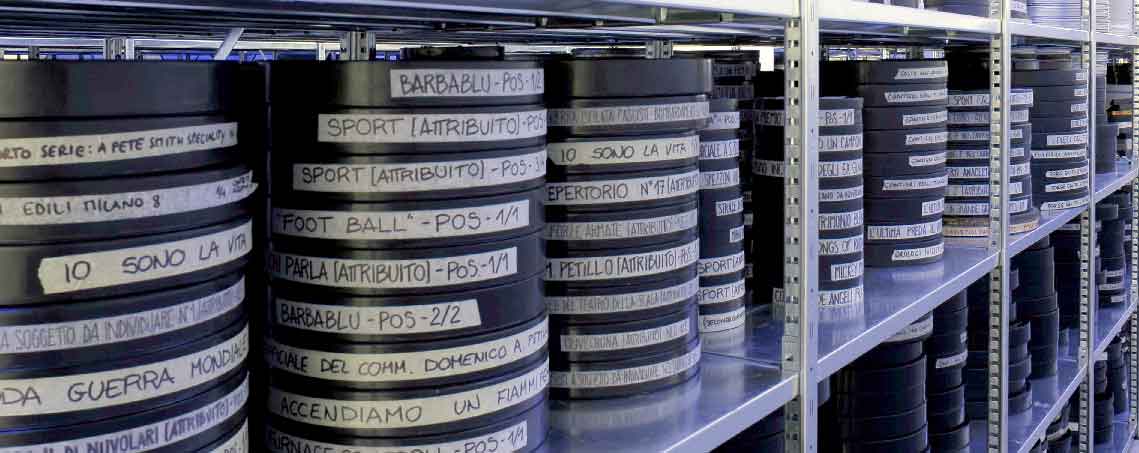
The finest reels of Italian cinema
Directly north of the Giardini Pubblici, west of the Porta Venezia is the see of the Cineteca Italiana in the Spazio Oberdan center. The film library offers 400 (art and historical) movie projections a year,
and organizes film festivals, cultural meetings and mini-concerts.
Partially accessible to the disabled.
Transport
Metro1, Porta Venezia stop
Tram: 9, 29, 30
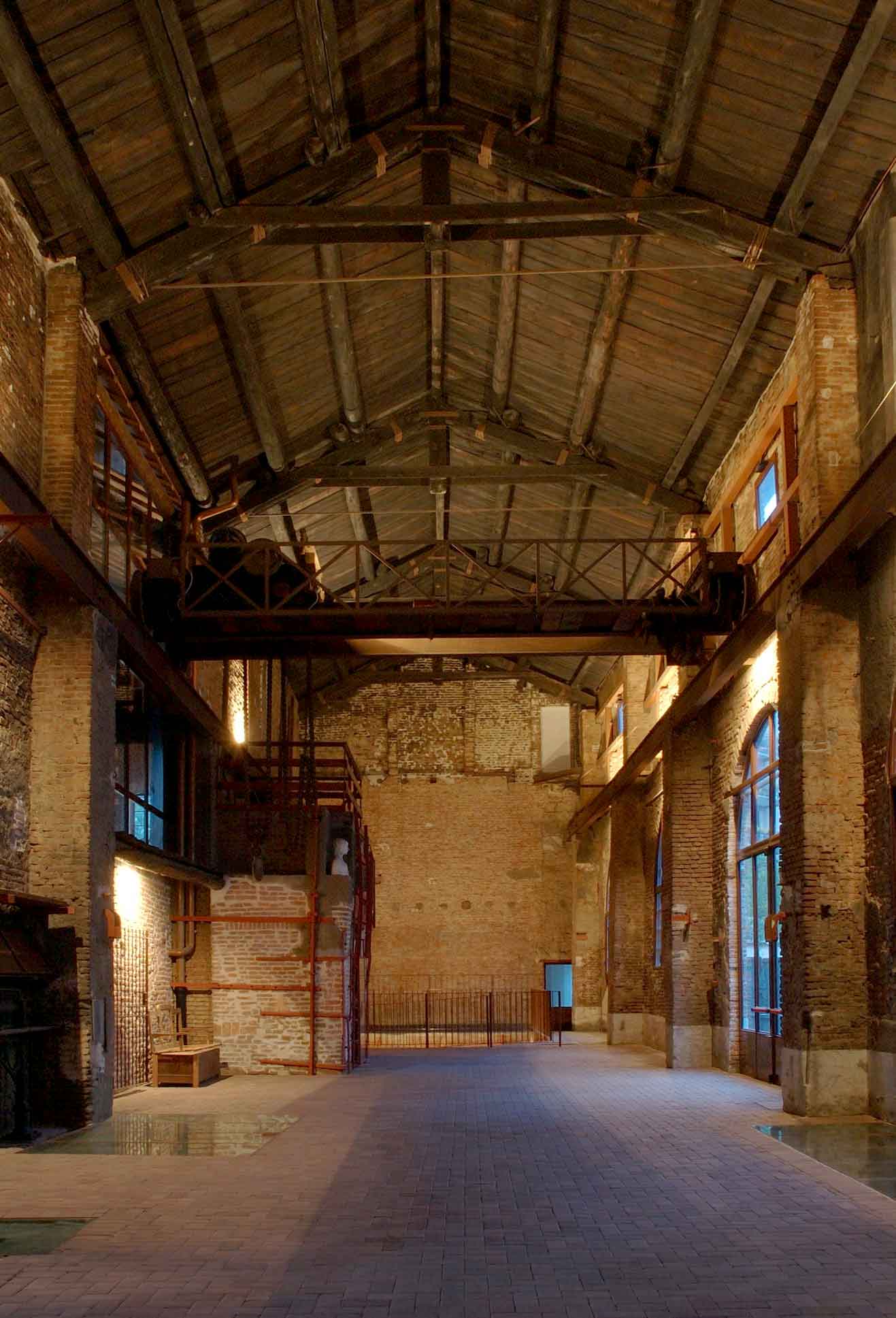
Casting in bronze
This former Foundry from Napoleonic times is now a museum of the art of bronze casting. The museum is close to the Santa Maria alla Fontana and offers one to learn about the complex process of bell making, from creating the templates right up to casting the bell.
Among others, the monuments of Alessandro Manzoni at Piazza San Fedele and the equestrian statue for the monument of Vittorio Emanuele II for the Duomo square were cast here. The foundry has its own website
Transport
Metro 3 Zara
Bus 52, 70, 82, 90, 91, 92
Tram 3, 7
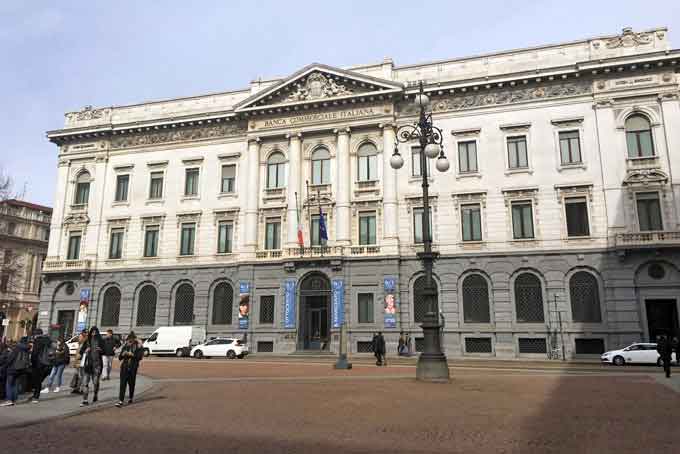
A superb new art museum in front of La Scala
From November 2011 a new museum of 19th & 19th century art is open to visitors of Milan, conveniently located in the historical premises of Banca Commerciale Italiana, Palazzo Anguissola and Palazzo Brentani, in front of La Scala. Entrance is at Via Manzoni.
The Gallerie museum is one of the Gallerie d'Italia, (others in Napels and Vicenza) consisting of works out of the rich collection of the Fondazione Cariplo and the Banco Intesa Sanpaolo.
The exhibition of some 200 works is divided into thirteen sections and twenty-three rooms located inside buildings of major historical, architectural and decorative value, redesigned and adapted by architect De Lucchi.
In the beautiful Anguissola part of the museum you'll find work of Canova, Hayez (The two Foscari), portrayals of the Italian Risorgimento by Induno (The Battle of Cernaja) and images of 19th century Milan.
The Brentano building hosts Lombardy landscapes, genre paintings, the Macchiaioli and Divisionists and Symbolist art. The exhibition ends with a room dedicated to Pre-futurist paintings by Boccioni.
The works on display can be seen also on the museum website.
There is a bookshop and a caffetteria at the corner of Via Manzoni.
Piazza della Scala, 6
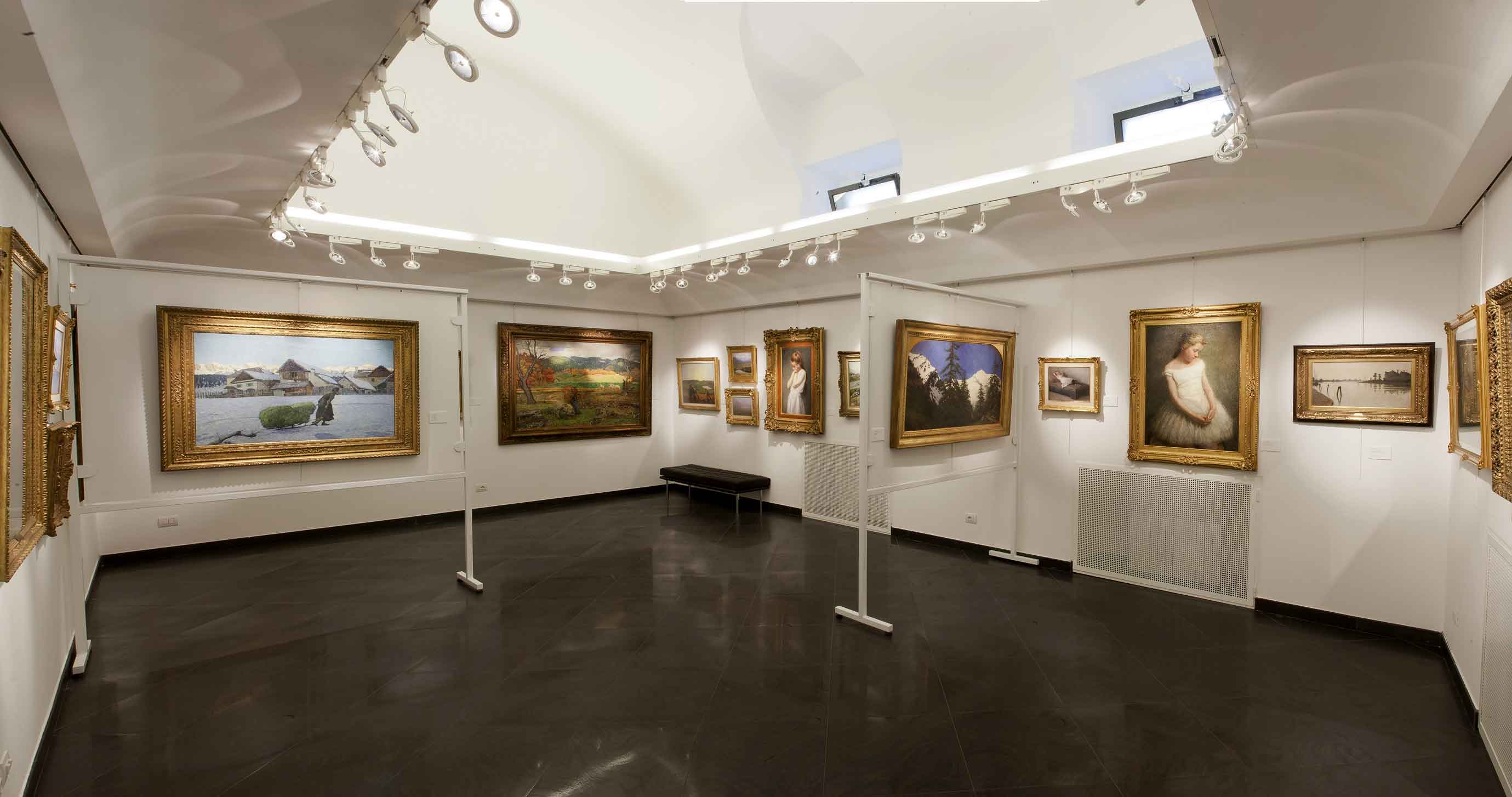
Modern Art Center
In what for more than half a century, from the 1940s on, was a important modern art gallery, the Galleria del Naviglio, since 2012 the GAM Manzoni is located. This Study Center of Modern and Contemporary Art organizes exhibitions that emphasize the relation between history and art.
A few of the works that are exhibited can be seen at the GAM website.
The museum is located in city center, near the Quadrilatero quarter.
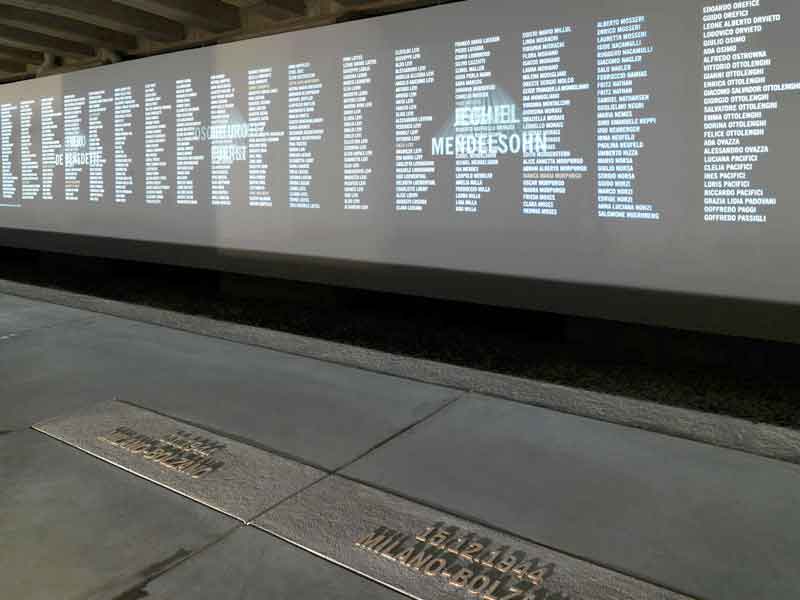
History of the Jews in Italy
The Jewish Documentation Center, located somewhat north of Sempione park, is worth a visit if you want to learn about the history of the Jews in Europe in general and in Italy in particular.
The center brings together studies and memorial articles relating to the Holocaust in Italy and in Europe, from the mid-19th century to the years of persecution at the start of the Second World War, through the Holocaust and into the postwar period, in several departments:
- a library
- a media center
- an historical archive
- an archive of prejudice
- teaching on the holocaust
For the last purpose the center has set up a digital exhibition on the Shoah in Italy with 300 items, comprising photographs, letters, journals, memoirs, and official documents. The website, presently in Italian, is due to be translated into English.
Completely accessible to the disabled.
Transport
Bus: 61
tram: 1, 29, 30
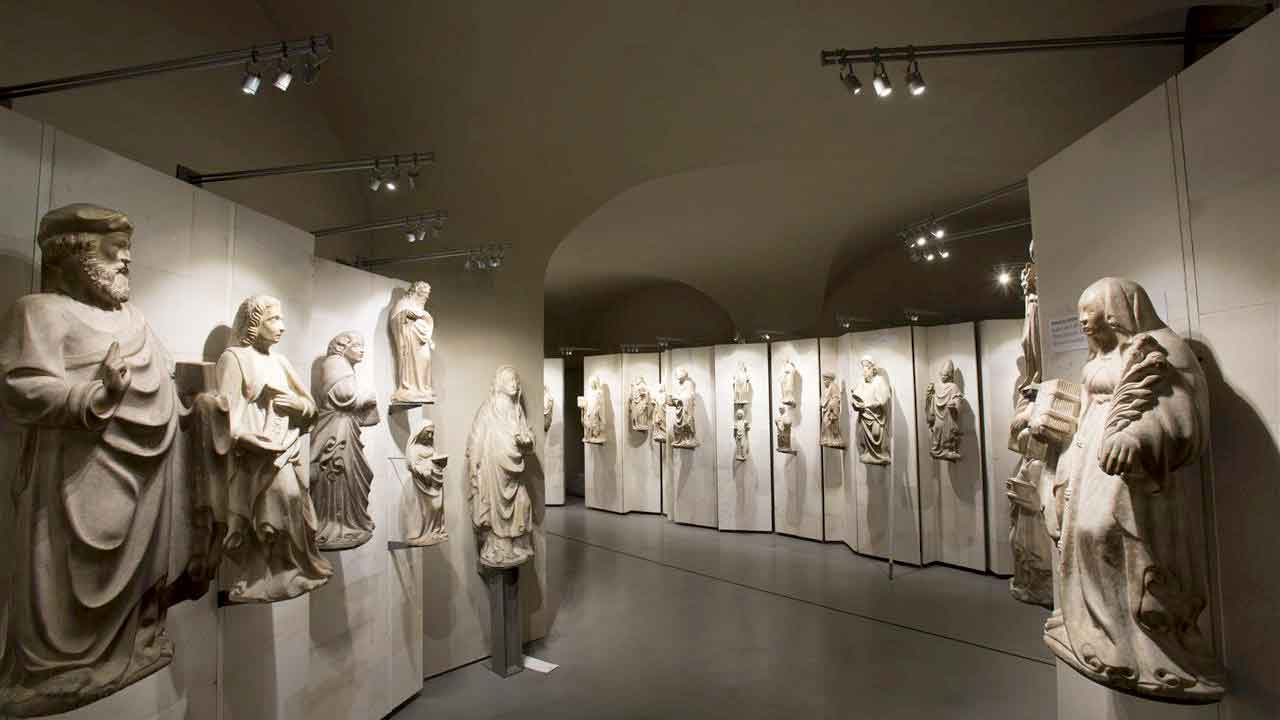
A never ending work
Museo del Duomo is the museum of Milan’s striking cathedral and shows its history, and tells the story of the Veneranda Fabbrica del Duomo. The Fabbrica was established in 1387 with the aim to design, build and preserve the Milanese cathedral, and this last part is still an on-going activity!
The collection centers on this single grand and symbolic monument – the Duomo. The museum was opened in 1953 by the art critic Ugo Nebbia and houses around 200 pieces, including statues, tapestries, overhangs, terracotta models, graphics materials, paintings, wooden models and stained-glass windows.
The museum is not located inside the Duomo itself – which is accessible free of charge – but in a separate building facing the Duomo, next to the Palazzo Reale.
Daily 10.00 am - 6.00 pm. Closed Wednesdays.
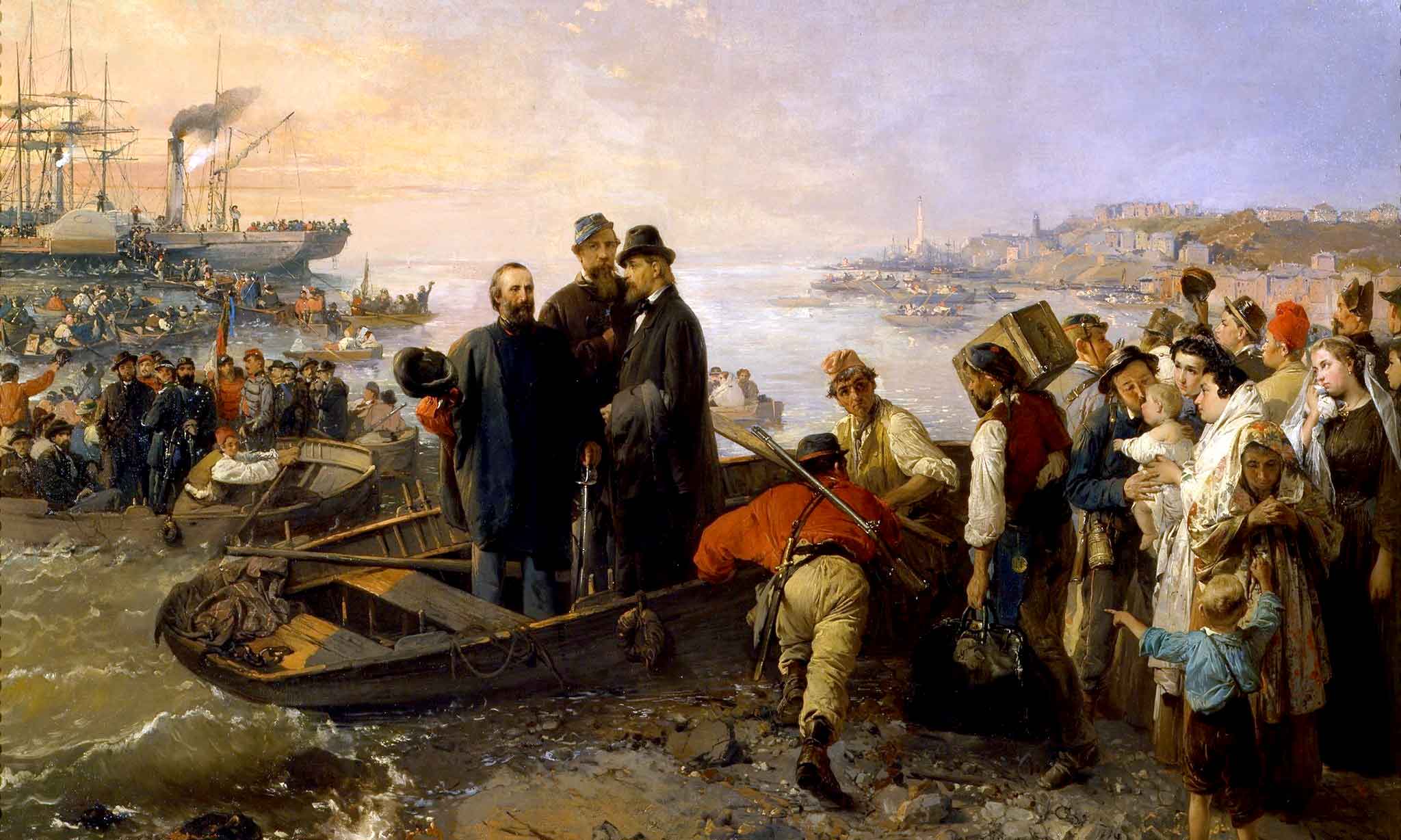
Italian(s) only!
It is rather unfortunate that the interesting and exciting story of the unification of Italy, called Il Risorgimento (The Resurgence) can only be followed in Italian at the historical museum that is specifically dedicated to the subject.
The museum is located in the Brera complex, in the Palazzo Moriggia, next to the Pinacoteca.
Exhibits in the 16 halls of the museum include portraits of Garibaldi and other Garibaldi relics such as a red shirt and his poncho, medals, period prints, sculptures, all sorts of weapons, and books. There's also a multimedia hall.
The museum is accessible to the disabled (bit of a steep ramp though).
Via Borgonuovo 23
Transport:
Metro 2 Lanza stop,
Metro 3 Montenapoleone stop
Tram 1, Bus 94, 61, 43
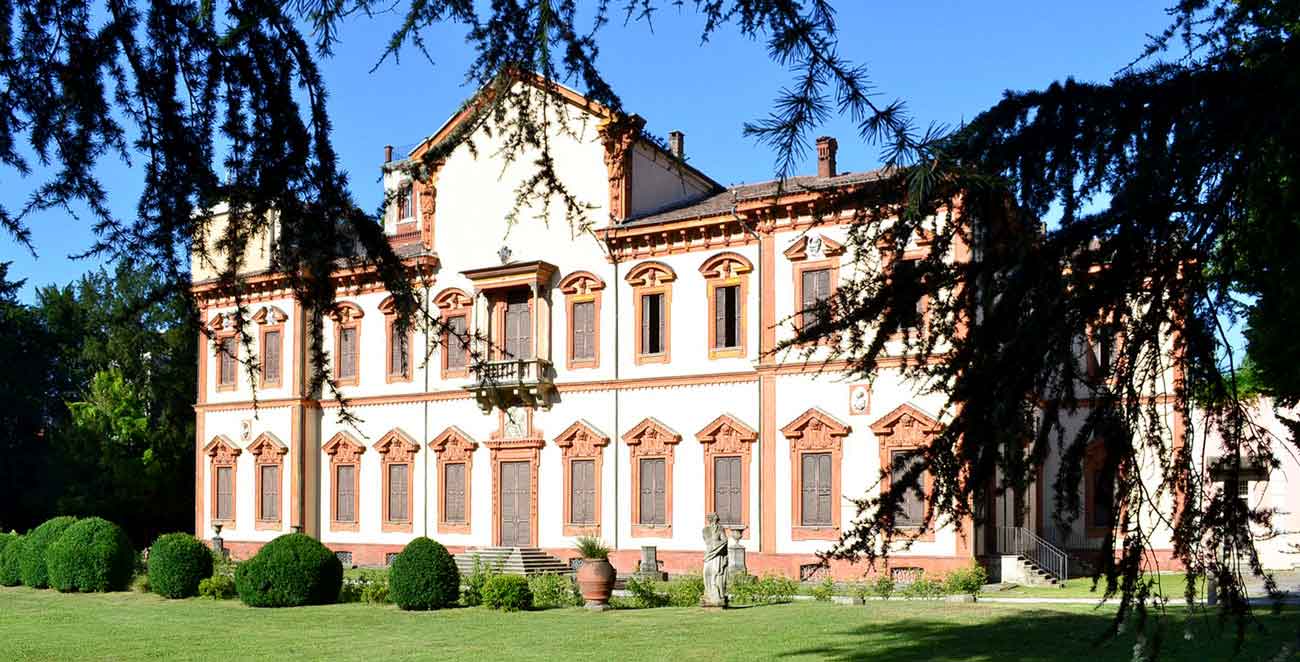
Pictures in Villa Ghirlanda Silva Hinterland
Located north of Parco Nord, actualy no longer part of Milan, but of the little village of Cinisello Balsamo, is the 16th century baroque Villa Ghirlanda Silva. Since a few years this villa is the see of a museum of modern photography.
The largest collection of the museum comprises the Archivio dello Spazio, a series on the landscape around Milan (over 1 million of pictures).
Apart from the museum, it is worthwhile to see the fresco cycles in the rooms of the Villa, the Sala degli Specchi (mirror room), used for concerts, and the large English style garden. There is also a bookshop, library and café.
Transport
Metro 5 Bignami stop, then tram 31 to the Villa Ghirlanda stop, across from the Museum.
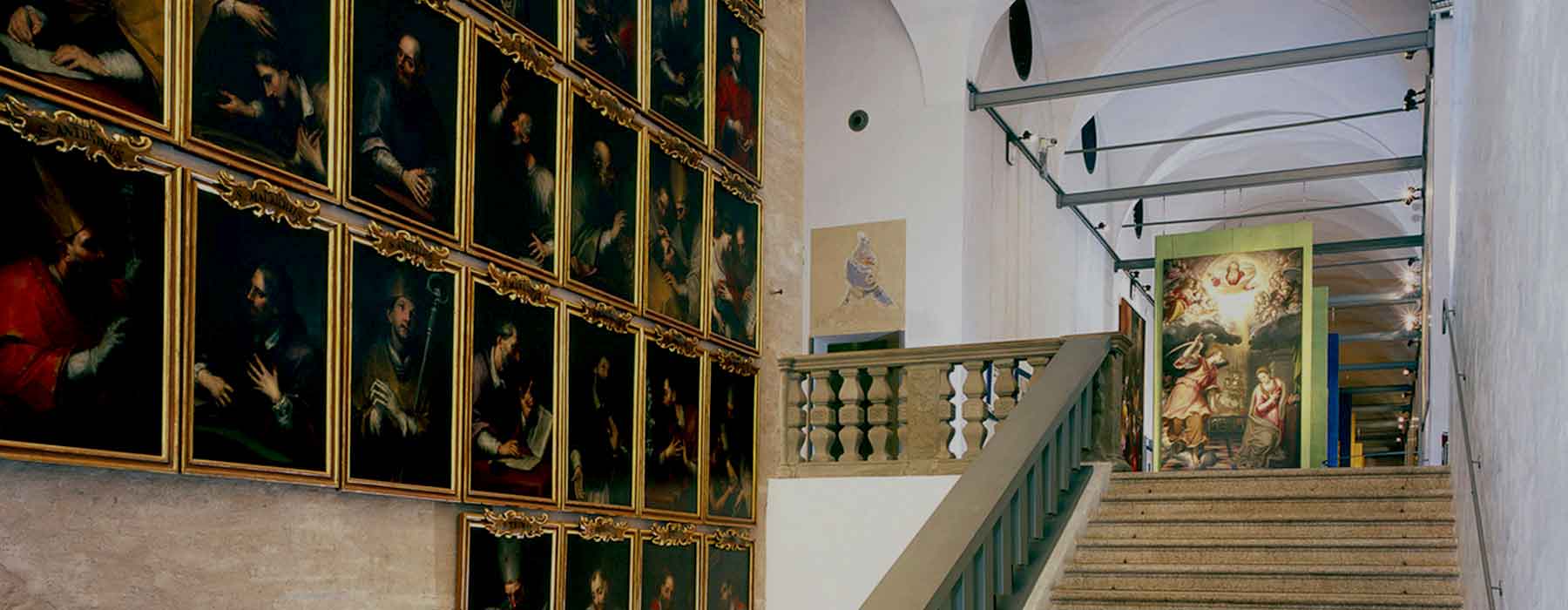
St Ambrose's reliquary
This museum is located in the former cloister of the Sant'Eustorgio and houses the archi-episcopal collections of Milan, dating from the time of St Ambrose (4th century) till the 19th century.
The exhibition opens with a group of works from the Basilica of Sant'Ambrogio, a series of objects linked to the history of the church and Milan’s great saint.
Some highlights:
- Capsella di San Nazaro (said to have belonged to St Ambrose to carry the relics of St Peter and St Paul)
- The Annunciation by Peterzano
- Saint Joseph with the Child Jesus by Guido Reni
- Crucifixion by Mosè Bianchi
- Jacob wrestling with the Angel by Morazzone
- the Crespi collection of gold-ground paintings (Fondo Oro)
- Gaetano Previati’s Via Crucis
There is a free audio guide service.
The museum's website offers a excellent overview of the collections, with a large amount of pictures.
Completely accessible to the disabled.
Corso di Porta Ticinese, 95
Transport:
Metro 2, Sant’Ambrogio or Sant’Agostino stop
Metro
3, Missori stop stop
Bus: 94
Tram: 3, 9, 29, 30
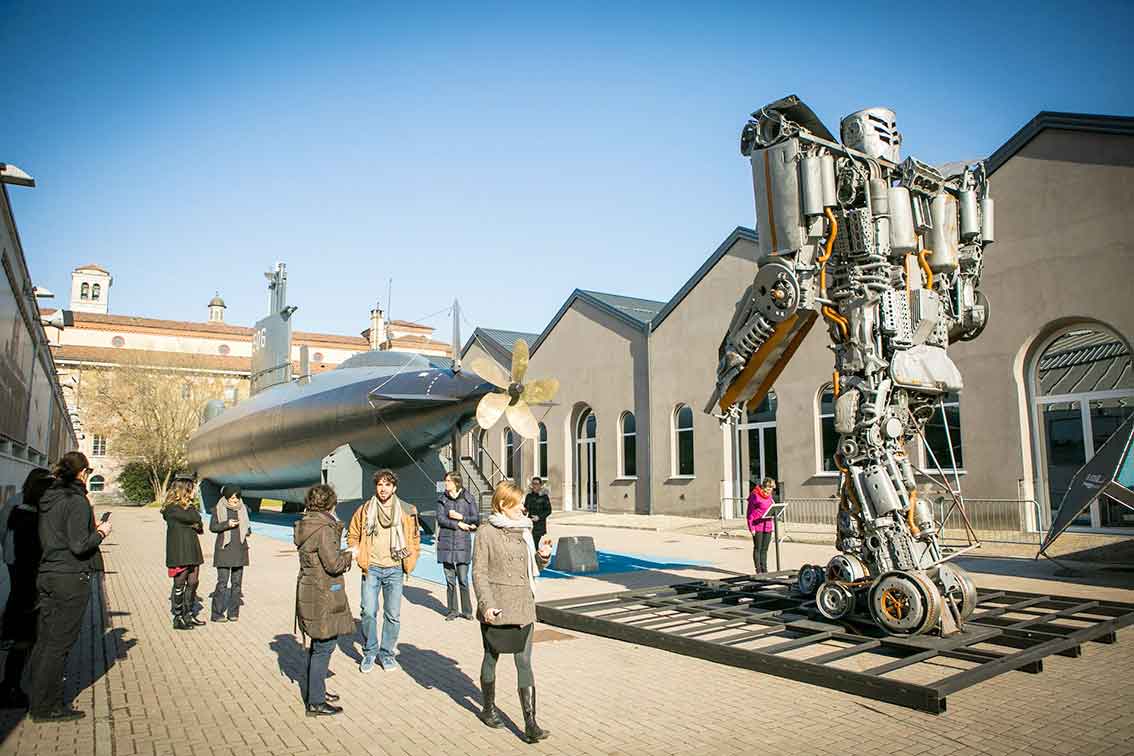
Leonardo's inventions
It's impossible to give an overview here of the wealth of exhibits presented at the Museo Nazionale della Scienza e della Tecnologia Leonardo da Vinci. The excellent website (in English) will help you out here.
The museum is housed in a former cloister (plus two new pavilions) and is the largest of its kind in Italy.
Especially worth mentioning is the entire department dedicated to the inventions of Leonardo (rightly so as the museum takes its name from the Renaissance uomo universale), see again the excellent website.
Another highlight is the possibility to visit (extra fee) the S-506 Enrico Toti submarine (Wedn-Fri 10.00-4.15; Sat&Holidays 10-5.45).
Other departments cover the themes of materials, communication, transport, energy and new frontiers.
A lot of attention is paid to draw the interest of the child visitor, e.g. by the interactive labs that allow a hand-on experience of each theme.
Outside are two areas where you can relax in leafy green surroundings.
You receive a 30% discount on your ticket with the MilanoCard.
Disabled access is available throughout the museum with the exception of the inside of the Toti Submarine, part of the Air Transport collection, and the Light i.lab.
Transport
Metro 2 S. Ambrogio
Bus 50, 58 San Vittore
Bus 94 Carducci
The Milan Annex
The Museo Pecci in Milan is founded (2010) as a satellite of the modern art museum in Prato,Tuscany. It is housed in a former industrial building in the Navigli district, and will stage a succession of exhibitions from the original Tuscan Pecci museum collection and contemporary art shows.
You can see a YouTube video ▶ of the opening, dedicated to the artwork of NIO architects, Dark Matter.
Transport
Metro Porta Genova
Tram 2
A Top10 Attraction. and a must see!
This a beautiful museum housed in the palazzo of the nobleman Gian Giacomo Poldi Pezzoli (19th century), close to the Scala in the Via Manzoni. It is one of the Top10 Attractions we suggest you do and see in Milan
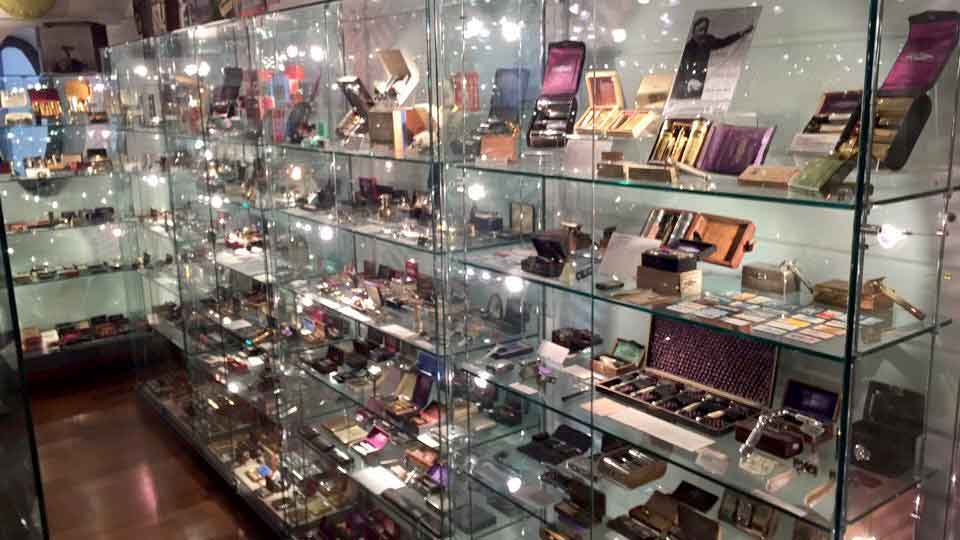
Giovanni Lorenzi's collection
In the Quadrilatero shopping district, at Via Montenapoleone you 'll find the peculiar museum of razors. It should be in the historic Palazzo Melzi of Cusano but may have moved in the meantime ... Check at the shop of Lorenzi first.
The museum hosts a collection of about 4000 pieces, as gathered by Giovanni Lorenzi since he started his cutlery shop here in 1929 (and it is still there). You can visit it on request (reservation).
Via Monte Napoleone 9
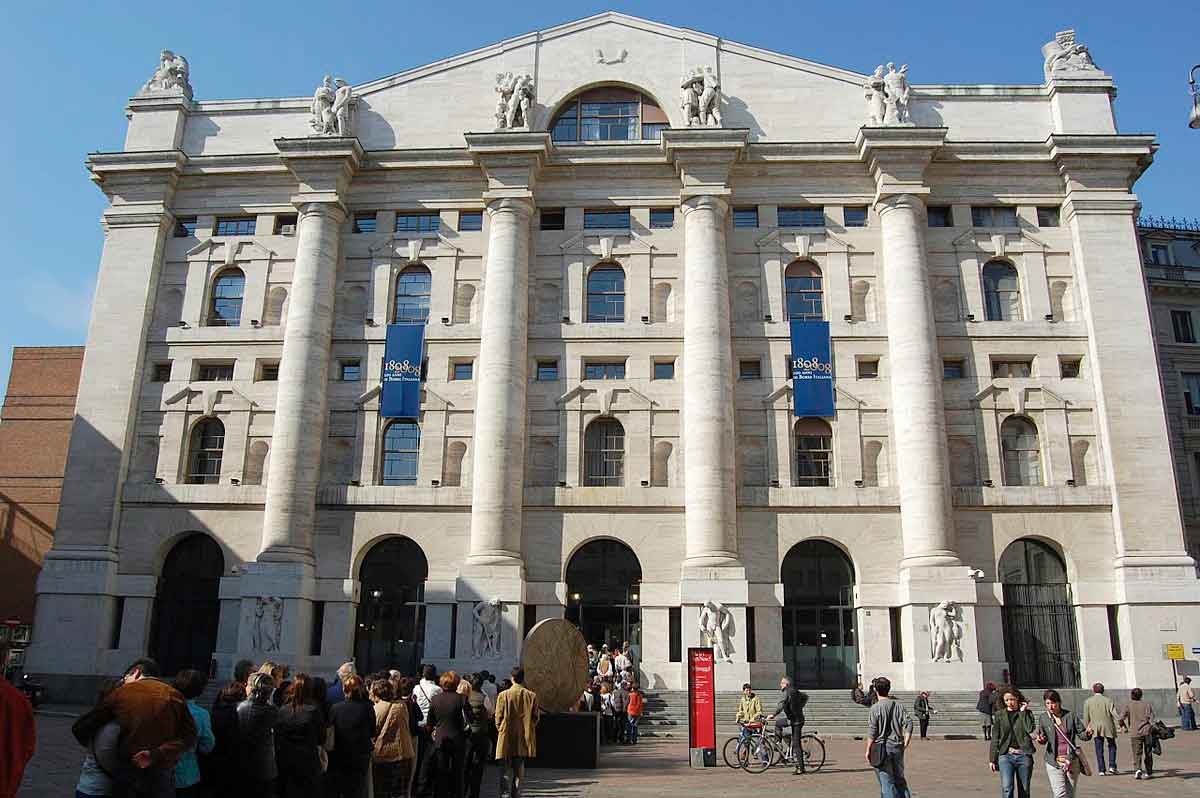
The former stock exchange
The name of this fascist period building, "midnight", doesn't hide any special meaning, it is just derived from its designer: Paolo Mezzanotte. It is also called Palazzo della Borsa for clarity's sake, although in reality the Milan Stock Exchange has been taken over by their London counterpart.
The palazzo is another example of the preferred style of the early 20th century (see Milan Central Station for another): massive and impressive with sculptures portraying the Four Elements.
In the basement there is a small historical display. Visible Mon-Fri (free). Due to the digitalization and globalization the function of several halls in the building has undergone change. For a large part it is now a congress center.
During the construction of the building the remains of a first century BC Roman Theater were found (destructed by Barbarossa), which can be seen in the current building, through a glass floor.
Completely accessible to the disabled.
Piazzi degli Affari 6
Transport:
Metro 1, stop Cordusio
Metro 3 : stop Duomo
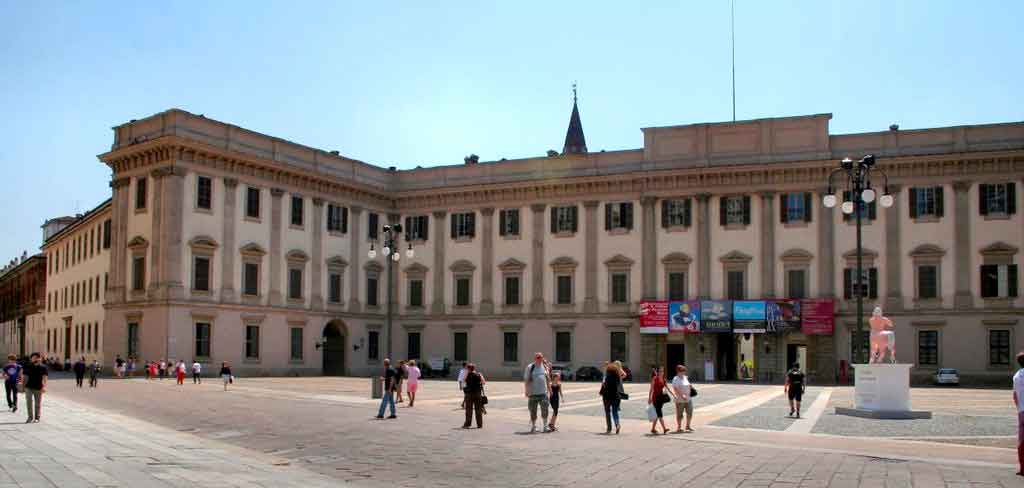
Museo della Reggia
To the right of the Duomo (facing it from the square) lies the Palazzo Reale complex, not to be confused with Villa Reale, which somewhere else in Milan.
This was the medieval see of the civil magistrates, but has been largely rebuilt in the 18th century. Part of the right wing is now taken up by the twin buildings of the Arengario complex of the 1rst half of the 20th century.
Both the Palazzo and Arengario buildings have been reconstructed very recently and house museums: the Museo della Reggia and the newly opened Museo del Novecento respectively.
The Museo della Reggia in the Palazzo offers a tour along the four historical epochs in which the building played an important part: the Theresian, neoclassical, restoration periods and the one of the unification of Italy (Risorgimento).
One of the highlights is the marble miniature of a Roman hippodrome (1804) in the Sala della Lanterna.
Accompanying each temporary exhibition there usually is some major artwork on display at the square in front of the Palazzo.
Completely accessible to the disabled.
Piazza del Duomo 12
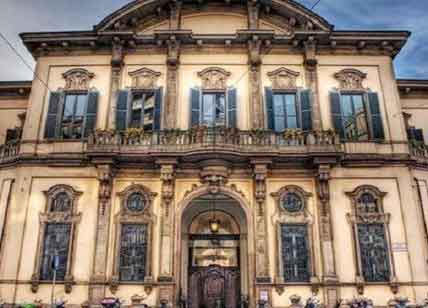
Books in a baroque building
Milan's main library is located not far from city center in the 18th century Palazzo Sormani.
There are over 600,000 specialist books, including the Stendhal library. About 20,000 Italian and international publications are available for consultation, and the library offers free Internet access.
The on-line catalogue can be consulted at the library's website.
On the 1rst floor is the Sala del Grechetto where concerts are held regularly.
Accessible for the disabled.
Corso di Porta Vittoria 6
Transport
Metro 1 San Babila, 3 Missori
Bus: 54, 60, 65, 73, 84, 94
Tram: 12, 23, 27
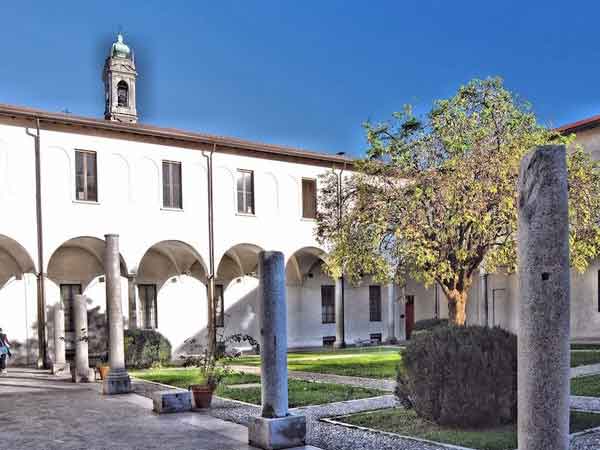
Museum and archaeological site
The Antiquarium Alda Levi, housed in the former convent of the Santa Maria della Vittoria church, is a small museum of archaeological finds of Milan. There is also a display on the history of Milan and the role of amphitheaters in a Roman city.
Of main interest is the site of the Roman Amphitheater, in the adjacent park (only accessible through the Antiquarium).
Each Thurs-Sat volunteers of the Tourist Club Italiano are present for explanations.
Completely accessible for the disabled.
Via de Amicis 17
Transport:
tram2-3-14; bus 94
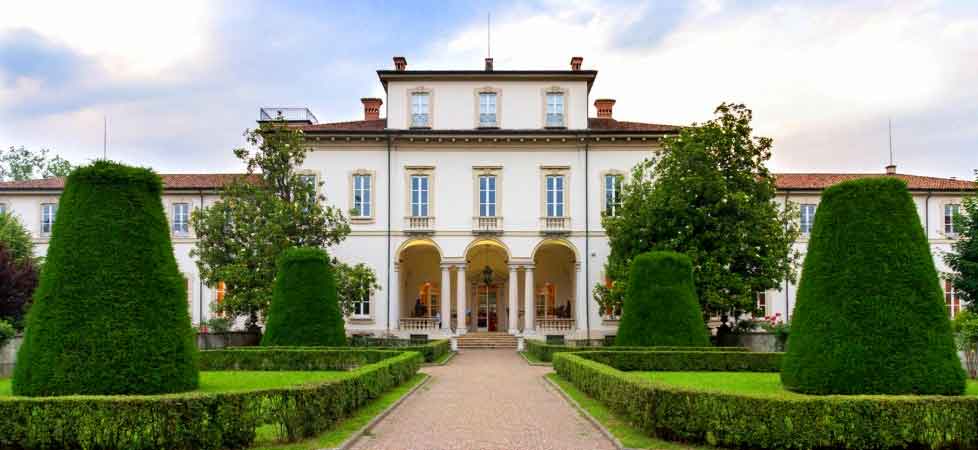
The Modern Sacred Art Gallery
This 18th century villa of the Clerici family is worth a visit for its architecture, the museum of sacred art, the gardens and the Roman and Greek amphitheaters (occasional open air performances). It is located way north of city center but can be reached by tram or bus.
For an impression of the art collection see the on-line catalog.
For up-to-date info on theatrical events in the amphitheaters see the Teatri di Villa Clerici website.
Via Giovanni Terruggia 8/14
Transport
Tram 4 (direction Niguarda) Niguarda Centro stop From Central Station: Tram 5 (direction Niguarda) Ornato stop (in front of Coop)
Bus 51 – 86 – 166
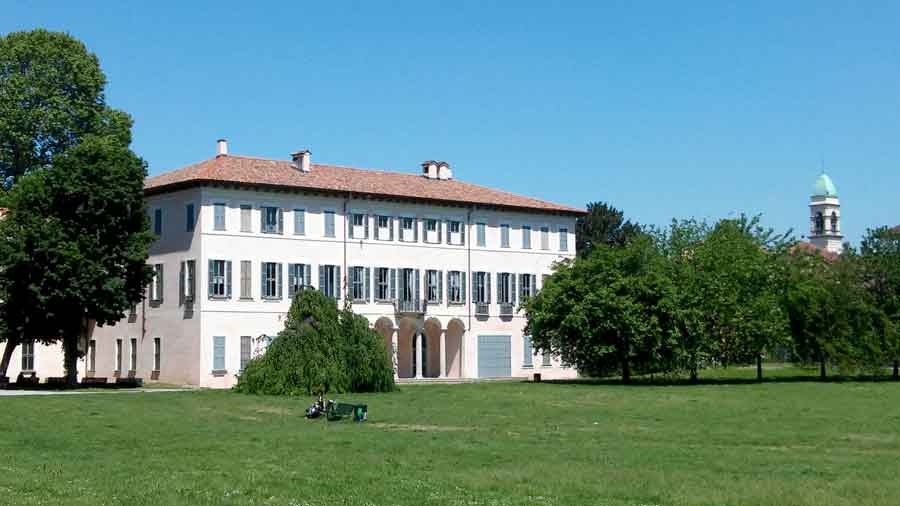
A social and cultural meeting point
This 17th century villa was an intellectual and social hub in the 19th, frequented by the writer Alessandro Manzoni and the painter Francesco Hayez. The architectural style runs from Baroque to rococo.
The originally Italian park was transformed into an English landscaped one.
The Villa hosts the Affori library, with a large collection of cartoons (fumetti).
The villa is now also in use as venue for wedding ceremonies.
The park offers several facilities, such as playgrounds, dog areas, sport fields.
Accessible to the disabled (1 step).
Viale Affori
Transport
Bus: 41, 52, 70
FNM train, stop Affori
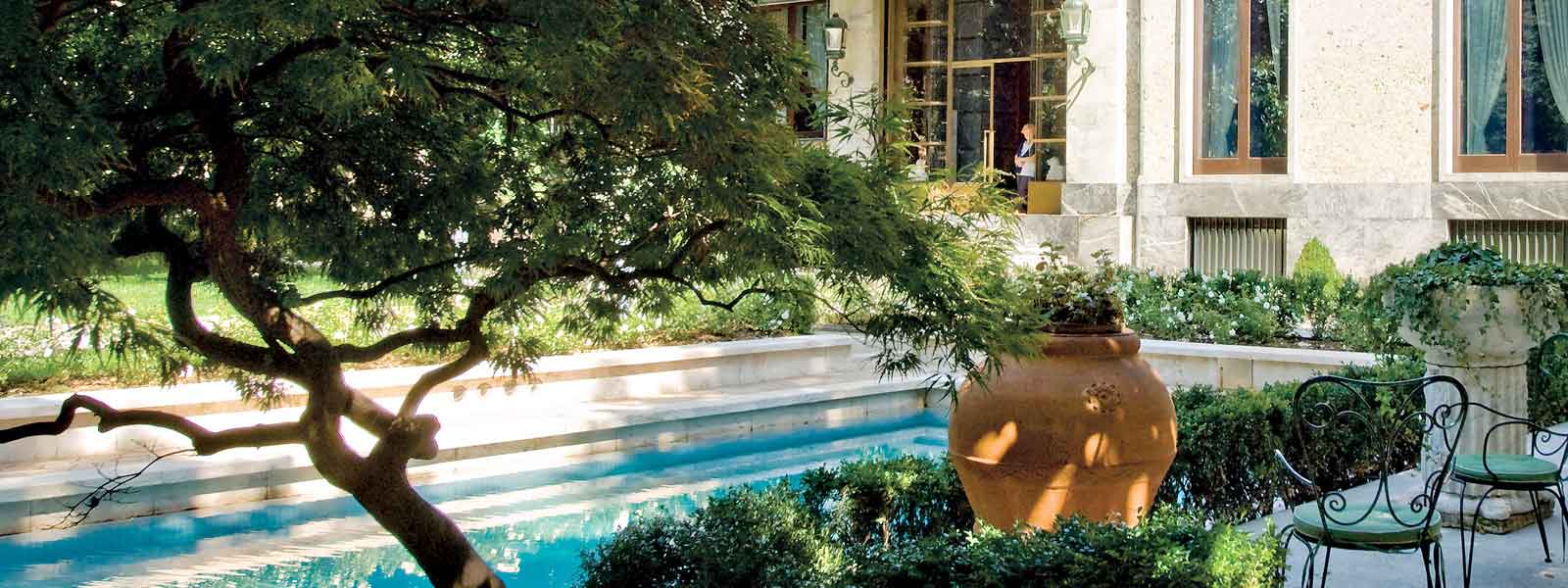
A testimony of aristocratic life in the 1930's
A little south of the Giardini Pubblici and the Natural History Museum lies Villa Necchi, a house constructed in the '30s of the previous century for the Necchi family, producers of the famous sewing-machines.
The Villa is still in its original style, inside and outside (tennis court, pool), and gives a lively impression of the upper middle class life of the period, but also of that of the servants (pantry, kitchen, bathrooms).
Another reason to visit is the rich collection of 18th and early 20th century paintings and decorative art. Some highlights:
- the Orestes and Electra of De Chirico
- the Dead Lover of Martini
- the Innocent Madman of Wildt
but there is also work of Boccioni, Carrà, De Pisis, Morandi and others. From the 18th century the painting of Venice of Il Canaletto is worth mentioning.
There's a slideshow on the website of the current owners of the Villa, the FAI (Fondo Ambiente Italiano).
The Museum is one of the four Historic House Museums (the others are the Museo Bagatti Valsecchi, the Museo Poldi Pezzoli and the Casa Museo Boschi Di Stefano) for which a passe-partout is available at 20 euro.
Completely accessible to the disabled.
Via Mozart, 14
Transport
Metro 1 Palestro, S. Babila, 3 Montenapoleone
Bus 54, 61, 94 via S. Damiano, corso Monforte
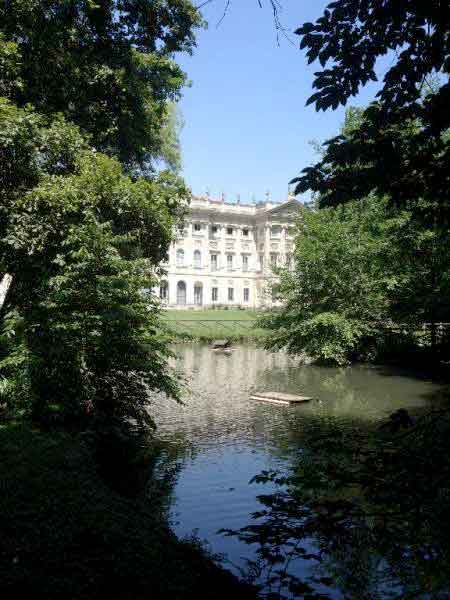
Art in the royal palace of Napoleon
This 18th century building has recently been renamed to Villa Belgiojoso Napoleone, former residence of Napoleon, probably to avoid confusion with the Palazzo Reale.
The Villa now houses the Galleria d'Arte Moderna (GAM), which also was recently renamed, to the Museo dell'Ottocento (museum of the 1800's), after a reconstruction period. The renaming is also meant to avoid a confusion, with the Palazzo dell'Arte in this case.
Notwithstanding all these changes the old names linger on, websites still exist and new ones don't work. You're in Italy!
The adjacent Padiglione d'Arte Contemporenea (PAC) now is a modern art exhibition center.
Due to all changes it's difficult to say in advance what paintings precisely are present in the two museums. There are 3D-views of the villa on the website.
A peculiarity is that the garden of the Villa is only open to adults if accompanied by at least one child!
The Villa is accessible for the disabled, with some assistance of personnel.
Via Palestro 16
Transport
Metro 1 Palestro stop
 Home
Home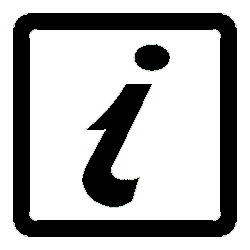 Practical info
Practical info Sights not to miss
Sights not to miss Bars & Aperitivo
Bars & Aperitivo Churches & Abbeys
Churches & Abbeys Day trips
Day trips Family Fun
Family Fun Fashion & Shopping
Fashion & Shopping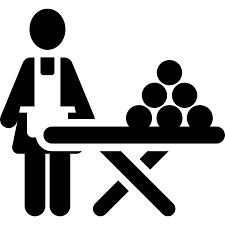 Markets
Markets-
 Museums
Museums  Park & Gardens
Park & Gardens Restaurants
Restaurants
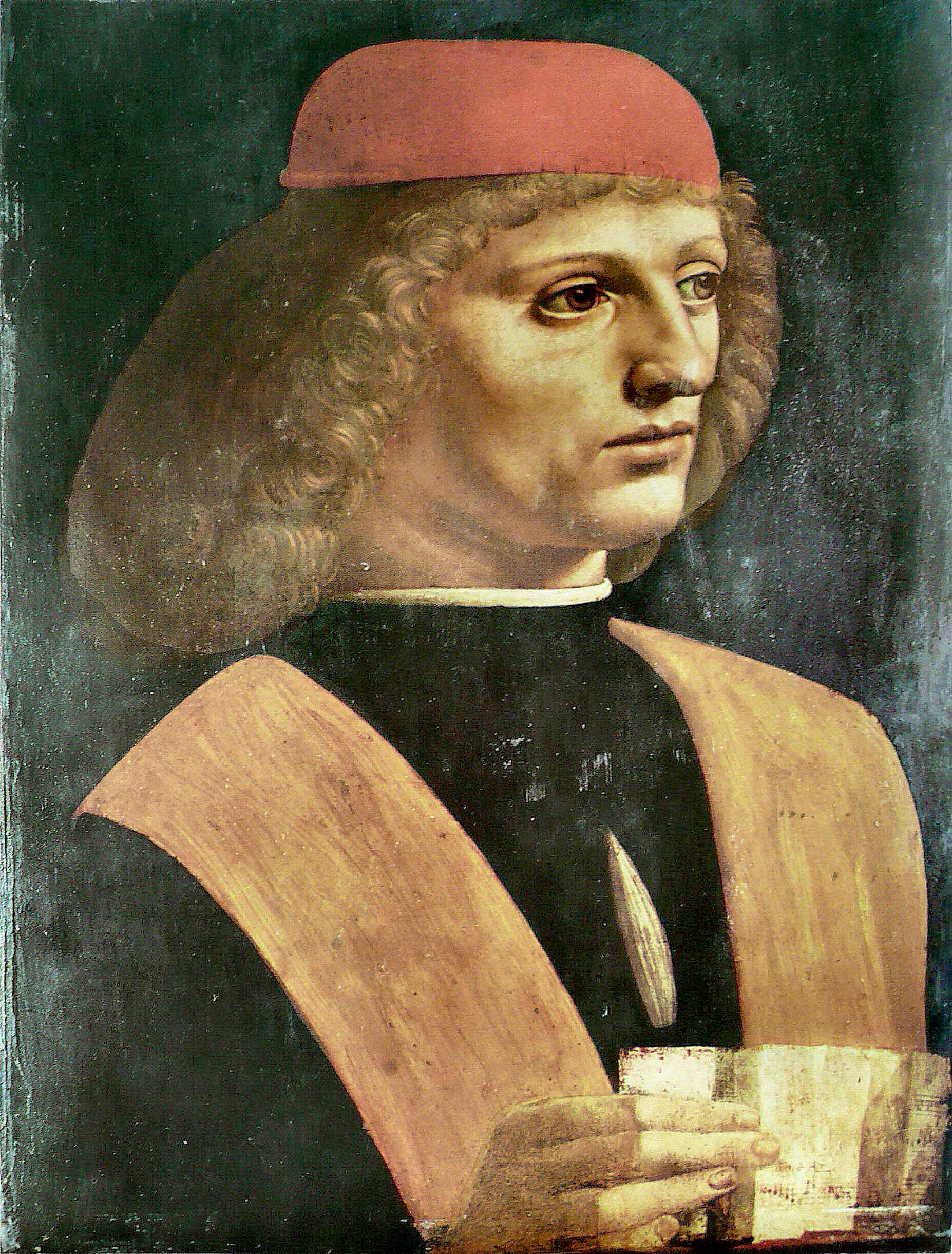
Leonardo da Vinci's Portrait of a young musician (can be seen in the Pinacoteca Ambrosiana
New
Living in Italy: the Real Deal
Ever thought of moving to Italy and enjoying the 'Good Life'? Read this book about two Dutchmen who have moved to Italy together with their dog, and the story of their new Bed & Breakfast.
The hilarious & horrendous adventures of two Dutch expats and their dog in Italy
About mafiose real estate agents, Mussolini-type builders, lousy plumbers, Italian neighbours, murderous veterinarians, horrors in hospitals, tasting wine, eating pizza, visiting the theatre, truffle hunting and much more!
Winner Reader Views Literary Fiction Award & 2017 Eric Hoffer Award Finalist
Buy at Amazon (paperback/ebook) and other retailers
